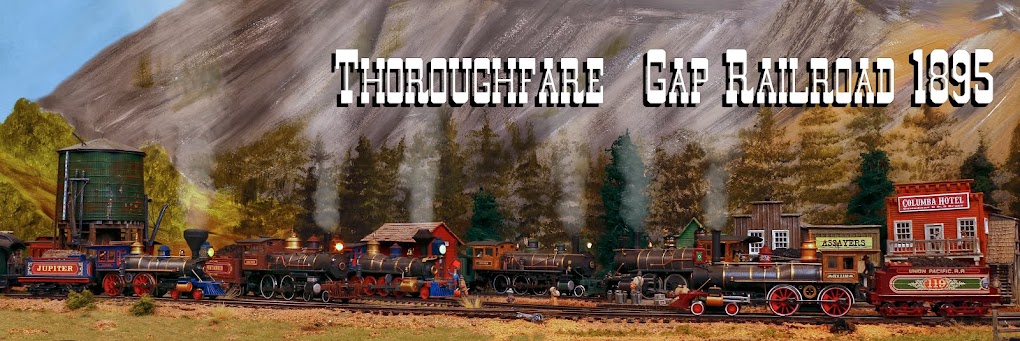My latest modelling project has been kitbashing a new locomotive. If you have explored my locomotives page, you will know that I have three 4-4-0s, one 2-8-0 and one 4-6-0 on the roster. However, I've been missing a 2-6-0 and wanted to fill that gap.
There are not many 2-6-0 pre turn of the century models available. There is a brass mogul which are expensive or the Roundhouse/Athearn 2-6-0 model which is quite beefy for a pre 1900 locomotive.
John Ott has a page on his fantastic website outlining how he kitbashed a Roundhouse 2-6-0 mechanism with a boiler from the Tyco/Mantua 4-6-0 locomotive. You can see John's modelling
here. I really liked John's model and decided long ago to give the conversion a crack myself. I already had a junked Mantua 4-6-0 in my draw and finally I managed to buy an old Roundhouse 2-6-0 mechanism.
You will see I borrowed John's concept and many of his ideas like the paper sectional counterweights for the driving wheels. This technique was really simple and looks really good. I'm thinking of applying it to the Bachmann Spectrum 4-4-0 and 4-6-0. John's model is of a much higher standard than my attempt. Nevertheless, I'm pleased with my final result and enjoyed the project.

I stuck to the basic concept and used the Roundhouse mechanism with the shortened Mantua boiler. But, rather than scratchbuilding a cab I retained the Roundhouse one. I also used a spare tender from a burnt out Bachmann Spectrum 4-6-0 and pilfered some of 4-6-0 details, like the bell, headlight lens, airpump and pipework. The oil lamp housing itself came from an old Bachmann 4-4-0 (old tooling) model. Surprising the headlight lens from the burnt out 4-6-0 was the perfect fit for the housing and snapped into place. I also ditched the open frame motor in favour of a can motor. After taking the photos I realised the model is missing airtanks under the running boards so I will add these at some stage.
I chose to paint the cab to represent a wood finish. I like wood cabs and felt an all black cab would make the locomotive too dark, especially when compared with the rest of the roster. The decals were made in photoshop and printed on white decal paper.
The locomotive has a Tsunami 2 sound decoder fitted, along with a current keeper. I have been very impressed with this decoder. It was easy to install and set up using JMRI Decoder Pro. I am especially enjoying the cut off feature which allows you to adjust the steam cut off, while the locomotive is moving. This allows the locomotive to truely 'drift' downgrade with just the rod clanking sounds. Given my layout has a large grade, I really enjoy this feature. When funds allow, It will be hard to restrain myself from upgrading the existing Tsunami 1 sound decoders in the two Spectrum engines and the 2-8-0.
The current keeper is a game changer. This device allows the locomotive to continue moving for up to 10 seconds after power has been lost. More than enough time to assist the locomotive over any dirty track. The risk of course is that if the locomotive derails it may keep on travelling over the scenery causing damage or perhaps find its way to the floor. I believe the risk of this is relatively minimal and the flawless running with the current keeper is next level. I am seriously thinking about installing current keepers in my other locomotives that will accept them, like the Bachmann Spectrum 4-4-0 and 4-6-0 and perhaps the 2-8-0. Although, the 2-8-0 may not have the space given it's tender is smaller.
I hope to do a Youtube video sometime to talk about the project and show what the locomotive is capable of. When I do I will post it here.
This is the link to my
Youtube channel






